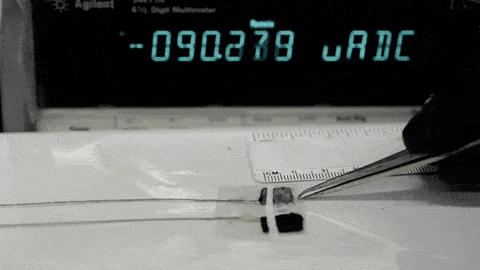
Simple electronics made of micro-sized magnetic particles dispersed inside conductive materials can pull themselves back together using magnetic attraction if fractured.
“It’s actually a pretty simple concept,” said Amay Bandodkar at the University of California, San Diego, who led the research team. “This started when we asked ourselves, how can we simply implement a self-healing feature into existing electronics without making them unnecessarily complicated or expensive? This was our solution.”
Bandodkar and colleagues experimented with various self-healing batteries, sensors, and circuits. Previous self-healing electronics which we showcased use conductive fluids that are released from capsules when a crack or rupture is detected to fill in the blanks. The UCSD team, however, used conductive graphite material mixed with small magnetic particles made from neodymium magnets. Both materials are dirt cheap and readily available. You can even get them from a supermarket, Bandodkar said.
Employing this magnetic mixture as a printing ink, the team 3-D printed simple electronics before subjecting them to a strong electromagnetic field. This is to ensure that all the microparticles are aligned in the same direction and, if displaced by a rupture, glue back together in their original orientation.
You can get an idea of how all of this works in the demonstration videos below.
https://www.youtube.com/watch?time_continue=94&v=bO377ZglVTU
https://www.youtube.com/watch?v=Eu9nrKbbwBI
It’s worth noting that while the batteries and circuits can self-heal and continue operating normally afterward, cracks and fracture signs still show. You might not think much of that, but the other downside is that these electronics are essentially magnetic and in many situations, that’s not acceptable. But Bandodkar is one step ahead of us and said the next version will come with electromagnetic shielding so users can breathe easily that their hard drives aren’t in peril.






